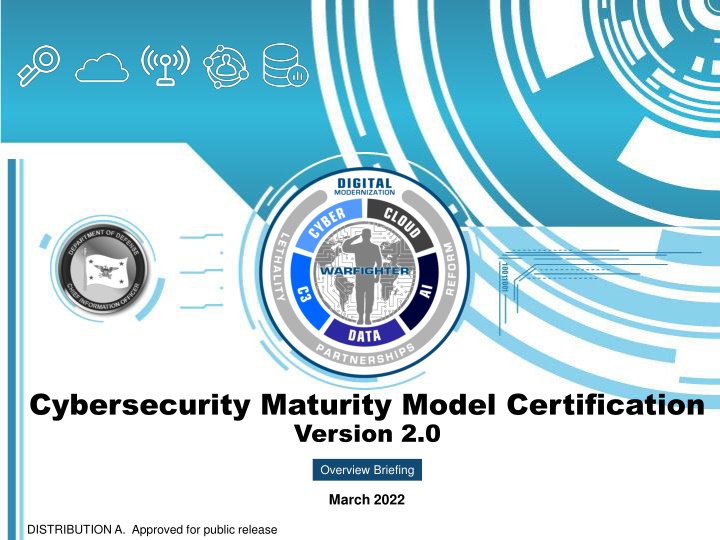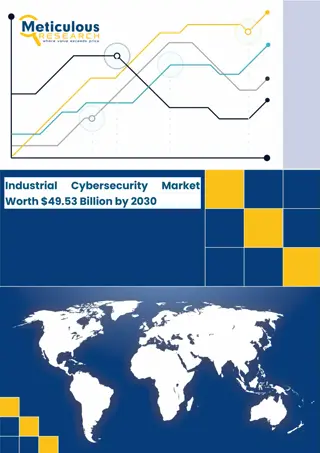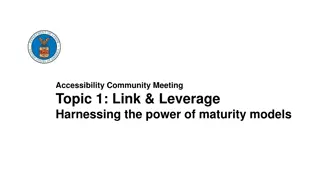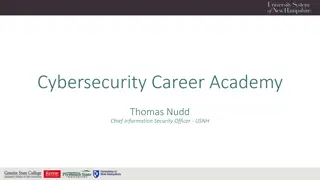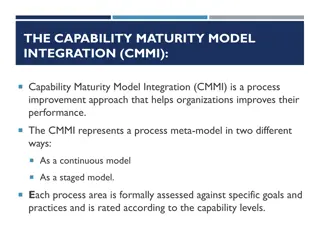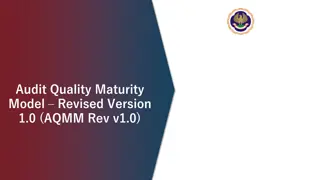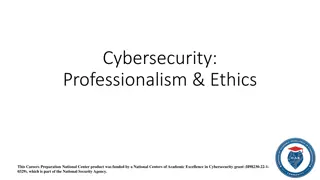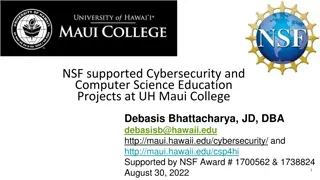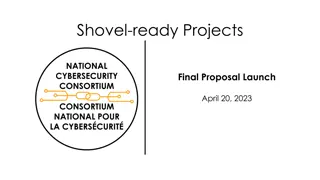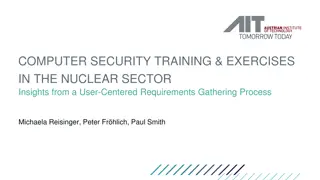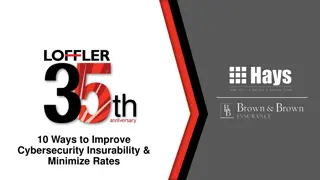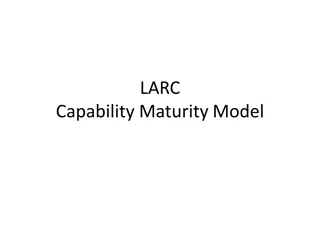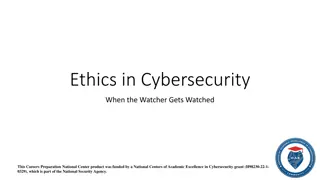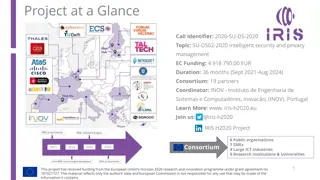Overview of CMMC 2.0 Cybersecurity Maturity Model Certification
The CMMC 2.0 introduces a streamlined model with three levels, focusing on protecting controlled unclassified information (CUI) with requirements aligned with NIST standards. Assessments vary for each level, including self-assessments for Level 1 and third-party assessments for Level 2. Government officials will assess Level 3, easing requirements for companies not handling prioritized acquisitions.
Download Presentation

Please find below an Image/Link to download the presentation.
The content on the website is provided AS IS for your information and personal use only. It may not be sold, licensed, or shared on other websites without obtaining consent from the author.If you encounter any issues during the download, it is possible that the publisher has removed the file from their server.
You are allowed to download the files provided on this website for personal or commercial use, subject to the condition that they are used lawfully. All files are the property of their respective owners.
The content on the website is provided AS IS for your information and personal use only. It may not be sold, licensed, or shared on other websites without obtaining consent from the author.
E N D
Presentation Transcript
Cybersecurity Maturity Model Certification Version 2.0 Overview Briefing March 2022 DISTRIBUTION A. Approved for public release
CMMC 2.0 Overview Briefing Note: The information in this presentation reflects the Department s strategic intent with respect to the CMMC program. The Department will be engaging in rulemaking and internal resourcing as part of implementation, and program details are subject to change during these processes. DISTRIBUTION A. Approved for public release
CMMC 2.0 Model CMMC 2.0 model is streamlined to three versus five levels Eliminates CMMC 1.0 Levels 2 and 4: Developed as transition levels and never intended to be assessed requirements Establishes three progressively sophisticated levels, depending on the type of information: Level 1 (Foundational) for companies with FCI only; information requires protection but is not critical to national security Level 2 (Advanced) for companies with CUI Level 3 (Expert) for the highest priority programs with CUI Requirements will mirror NIST SP 800-171 and NIST SP 800-172 Eliminates all CMMC unique practices and maturity processes: Work with NIST to address identified gaps in the NIST SP 800-171 Aligns Level 2 with NIST SP 800-171 Level 3 will use a subset of NIST SP 800-172 requirements Simplifies the CMMC standard for companies, while safeguarding critical Department information DISTRIBUTION A. Approved for public release
CMMC 2.0 Assessments CMMC Level 1 (Foundational) will require DIB company self-assessments CMMC Level 2 (Advanced) may require third-party or self-assessments, depending on the type of information Requires third-party assessments for prioritized acquisitions: Companies will be responsible for obtaining an assessment and certification prior to contract award Requires self-assessments for other non-prioritized acquisitions: Companies will complete and report a CMMC Level 2 self-assessment and submit senior official affirmations to SPRS CMMC Level 3 (Expert) will be assessed by government officials Eases assessment requirements for companies not handling information related to prioritized acquisitions DISTRIBUTION A. Approved for public release
Allowance of POA&Ms and Waivers CMMC 2.0 will allow limited use of POA&Ms Strictly time-bound: Potentially 180 days; Contracting Officers can use normal contractual remedies to address a DIB contractor s failure to meet their cybersecurity requirements after the defined timeline Limited use: Will not allow POA&Ms for highest-weighted requirements; will establish a minimum score requirement to support certification with POA&Ms Waivers will be allowed on a very limited basis, accompanied by strategies to mitigate CUI risk Only allowed in select mission critical instances: Government program office will submit the waiver request package including justification and risk mitigation strategies Strictly time bound: Timing to be determined on a case-by-case basis; Contracting Officers can use normal contractual remedies to address a DIB contractor s failure to meet their cybersecurity requirements after the defined timeline Will require senior DoD approval to minimize potential misuse of the waiver process Limited use of POA&Ms and waivers could allow the Department and DIB companies flexibility to meet evolving threats and make risk-based decisions DISTRIBUTION A. Approved for public release
Rulemaking Codifying CMMC 2.0 Changes will be released through a interim rule. A 60-day public comment period and concurrent congressional review will be included prior to the rule becoming effective DoD has mandatoryrulemaking obligations for CMMC that must be addressed as part of the CMMC 2.0 implementation Rulemaking under 32 CFR is required to establish the CMMC program Rulemaking under 48 CFR is required to update the contractual requirements in the DFARS to implement the CMMC 2.0 program The DoD is suspending the CMMC Piloting effort and mandatory CMMC certification Timeline to complete all rulemaking requirements will be 9 to 24 months; includes a mandatory 60-day public comment period and concurrent congressional review The DoD will continue to encourage the DIB sector to enhance their cybersecurity posture during the interim period The Department is exploring opportunities to provide incentives for contractors who voluntarily obtain a CMMC 2.0 Level 2 certification in the interim period Until rulemaking formally implements CMMC 2.0, the DIB s participation in CMMC will be voluntary DISTRIBUTION A. Approved for public release
CMMC 2.0 tailors model and assessment requirements to the type of information being handled Model Assessments 110+ Triennial Gov t-led LEVEL 3 Expert CUI, highest priority programs practices based on NIST SP 800-172 CUI, prioritized acquisitions 110 Triennial Third-Party LEVEL 2 Advanced practices aligned with NIST SP 800-171 CUI, non-prioritized acquisitions Annual LEVEL 1 Foundational 17 Self-Assessment practices FCI, not critical to national security Note: The information in this presentation reflects the Department s strategic intent with respect to the CMMC program. The Department will be engaging in rulemaking and internal resourcing as part of implementation, and program details are subject to change during these processes. DISTRIBUTION A. Approved for public release
Questions? DISTRIBUTION A. Approved for public release
